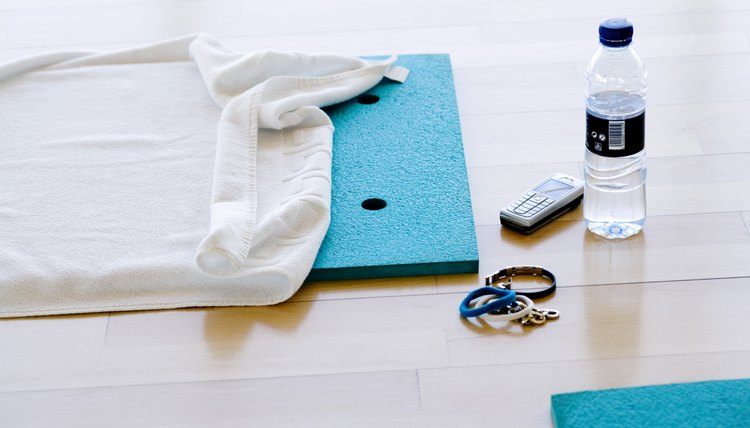Muscles Used in a Double Leg Lift

The double leg lift is an isolation exercise done lying on your back on the floor or on a flat bench in which you lift up your legs until they are pointed directly towards the ceiling. You lower your legs back down stopping just short of touching the floor. This leg lifting movement occurs at your hips and is known as hip flexion.
Primary Muscle
The primary muscle involved in the double leg lift is the iliopsoas, which is one of the major hip flexor muscle groups. The iliopsoas consists of two separate muscles, the iliacus and psoas. It originates at the pelvis and lower vertebrae and runs down the front of the hips where it inserts at the upper femur. When the iliopsoas contracts, it pulls the femur bone up towards the pelvis, which results in flexion of the hips.
Additional Hip Flexors
Other hip flexor muscles also contribute to the exercise, including the tensor fasciae latae, sartorius, pectineus, adductor longus, adductor brevis and rectus femoris. These muscles are all at the front of the hips and assist the iliopsoas in picking up straightened legs against resistance and controlling the legs down to the floor.
Core Muscles
Some lifters incorporate the double leg lift into their abdominal workouts; however, the rectus abdominus and obliques only contribute to this exercise by contracting isometrically. Both muscles contract and hold the contraction over time to stabilize the spine and prevent it from hyperextending when you’re lifting and lowering your legs. The abdominals and obliques do not contract dynamically during the double leg lift.
Considerations
If you wish to increase the involvement of your abdominals and obliques during the double leg lift, pick your hips off the floor at the top of the position. Once your legs are pointed straight up in the air, keep them in this position and lift your hips off the mat or bench so that your feet rise up towards the ceiling. This flexes your waist for a dynamic contraction in your abdominal muscles. To increase the difficulty of the exercise, you can perform the exercise on an incline bench to elevate the torso.
References
Writer Bio
Kim Nunley has been screenwriting and working as an online health and fitness writer since 2005. She’s had multiple short screenplays produced and her feature scripts have placed at the Austin Film Festival. Prior to writing full-time, she worked as a strength coach, athletic coach and college instructor. She holds a master's degree in kinesiology from California State University, Fullerton.
